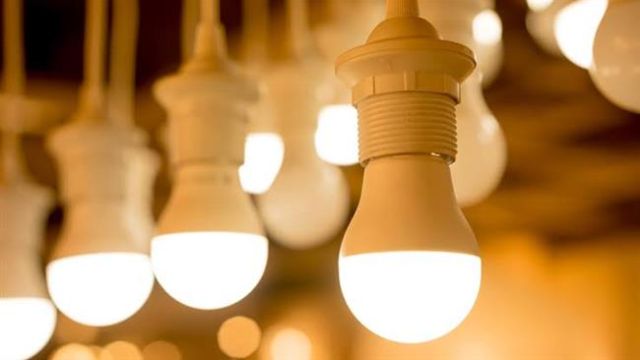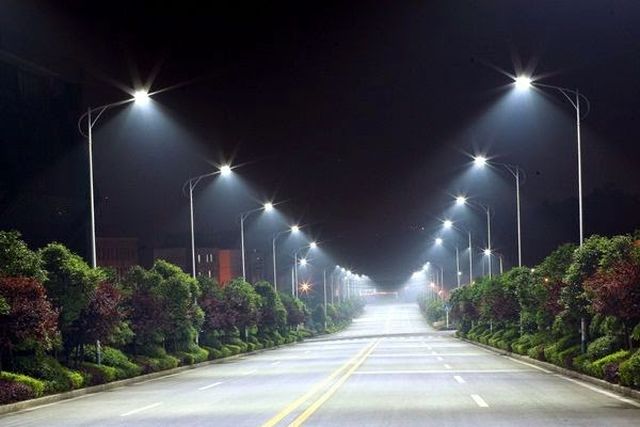
by admin | May 25, 2021 | Opinions
 By Vishu Mishra,
By Vishu Mishra,
As per the United States Department of Energy (US-DOE), lighting causes 5-6 per cent of the overall Greenhouse Gas (GHG) emissions globally. Light Emitting Diodes (LEDs) can greatly help in mitigating the adverse effects of GHG emissions. They consume 80-85 per cent less electricity than conventional lighting sources and have much higher operating lifetimes (more than 50,000 hours). Unlike the preceding generation of lights, such as Compact Fluorescent Lamps (CFLs), LEDs release zero mercury toxicity into the environment.
Owing to such these merits, the global lighting market is witnessing a huge policy-driven deployment of LEDs. Almost all major cities across the world are anticipated to replace about 50 million traditional light fixtures with LEDs. Currently, there are close to one billion efficient lights (LEDs and CFLs) operating in the US. Among them, LEDs are projected to save approximately 348 trillion watt-hours of energy by 2027.
In India, close to 230 million LED bulbs were distributed under the Ujala Yojana (May, 2017). India’s LED market is a mix of domestic and foreign players. The players’ share is volatile, as market dominance primarily depends on constant upgradation of innovative technologies.
Imported LEDs (from China, Taiwan and Korea) and the unorganised sector are currently dominating the market. This is due to an absence of national-level standardisation and regulations for the domestic supply chain framework. Indian industry lacks manufacturing technologies and research efforts for the upcoming technologies of the sector.
The first research breakthrough in LEDs came with the application of Gallium Nitride (GaN) in the early 1990s. At that time, Gallium and its alloys showed capabilities of producing 10-100 times brighter luminescence than its predecessor materials, such as Silicon Carbide. Currently, there are a wide range of LED applications using GaN, designed for high and ultra-high brightness, such as automotive lights, traffic signals, big screen TVs and the like.
Despite high promise and market opportunities, large-scale adoption of LEDs will depend on improving performance aspects such as efficiency and efficacy. For example, global adoption of highly efficient LEDs can reduce our carbon footprint up to 800 million tonnes of CO2 equivalent. Further, with US-DOE’s work in Research and Development (R&D) of Solid State Lighting (SSL), the lighting efficacy of current LED devices will be enhanced by 25 per cent, reaching 200 lumens per watt (LPW) from 160 LPW.
So far, the US-DOE has achieved a huge industrial footprint with over 260 patent applications in LED products; the technology is growing laterally. As a result, many success stories are coming in niche LED lighting, such as marine, harbour, organic, smart lighting and the like. Smart lighting has grown two-fold in recent years. It has integrated applications such as sensors for public transport movement, signal synchronisations, et al. Similarly, organic LEDs are seen as the next generation of SSL technologies, with applications currently seen in TVs and phones.
In India, lighting constitutes 18 per cent of the total electricity usage. The savings from LEDs, in tandem with smart metering, smart designing and connected lighting will be close to 9-11 per cent (50 per cent and more) of the total consumption. It is imperative that the government constitute a policy framework that can foolproof industry standardisation and regulatory mechanisms in the lighting industry.
BIS can create standards pertaining to design and manufacturing of LEDs. This will create parity among domestic and foreign competitors. Similar to the efforts seen in the US, a national level research programme on SSL can focus on improving the working outputs of the upcoming lighting technologies. It will strengthen domestic manufacturing capabilities that can cater to domestic and global demand. In order to support domestic manufacturing, government can assist by facilitating financial incentives (such as subsidies in capital, production, et al). Indian academic institutes and research laboratories can collaborate to pursue R&D of promising LED technologies. The synergy of renewables and energy efficiency measures can enhance the ongoing carbon mitigation efforts and improve our national energy security.
(Vishu Mishra is a Research Engineer with the Center for Study of Science, Technology and Policy – CSTEP – an Indian technology-policy think tank. The views expressed at those of CSTEP. He can be contacted at vishumishra@cstep.in)
—IANS

by admin | May 25, 2021 | Opinions
 By Amit Kapoor and Chirag Yadav,
By Amit Kapoor and Chirag Yadav,
The Indian LED lighting industry is going through a boom phase. According to some estimates, the market has grown at a compound annual growth rate (CAGR) of 17.5 per cent between 2009 and 2016 and is now worth around $3.7 billion (with LEDs at around 40 per cent of the market share). This makes the industry worth much more than the total GDP of over two dozen countries around the world.
The Modi government’s Unnat Jeevan by Affordable LEDs and Appliances for All (UJALA) programme, the world’s largest non-subsidised LED bulb distribution scheme, has given the industry an added push. Over 250 million LED bulbs have been successfully distributed under the programme. The eventual target is to replace 770 million incandescent bulbs across India with LEDs. Such a humongous production target opens up prospects of great employment opportunities and exponential growth within the industry.
However, the situation is not so straightforward. Market distortions due to corruption and illegal activities have always been a bane for India and the lighting industry is no exception. According to a recent study by ELCOMA, the manufacturers’ umbrella body, across three Indian metropolitan cities, 54 per cent of LED brands and 63 per cent of downlighter brands are non-compliant with industry regulations (carrying the name and address of the manufacturer on the product). This makes more than half the lighting market illegal in its operations and out of the purview of tax authorities in these cities. The situation can only be worse in smaller cities. Moreover, about 80 per cent and 77 per cent of LED and downlighter manufacturers were found to be non-compliant of BIS safety regulations. This puts the consumers of these goods at risk.
Such disproportionately high levels of illegal operations diminish the gains that the economy can make from a thriving manufacturing industry. First are the employment losses that are generated as a result of these illegal manufacturers. Such operators either illegally import finished products from China or merely assemble imported parts in India — reducing any requirement for labour within the country.
Second, since the illegal market evades taxes by definition, it results in a huge loss for the national exchequer. When more than half the market is unaccounted for, a $4 billion industry can be said to amount to at least twice that number. With a GST of 12 percent on LEDs, the loss in revenue should sum up to approximately $0.5 billion. Finally, by not complying with safety standards, these operators put at risk quite a few consumers, most of whom are at the bottom of the pyramid.
Apart from these inimical effects on the economy, such illegal operations tend to distort the pricing of the market as well. Since this segment of the market does not have to incur the cost of compliance or pay any taxes, their costs of operation are lower than the rest of the market. Due to these reasons, products manufactured through the legal route have a price mark-up of about four times in the LED market. Therefore, unless the consumer is brand and safety conscious, the illegal market keeps capturing a higher market share. This creates a vicious self-fulfilling cycle for the expansion of tax-avoiding manufacturers which disincentivises compliance.
The lighting industry is not a unique case in India. A parallel illegal market exists for virtually all products in the country and this is mostly true for all economies. However, the magnitude and size of the parallel market in the lighting industry is alarming. The elimination of these activities and expansion of organised manufacturing is crucial for achievement of higher levels of development for the economy. Jobs, revenue and safety all hang in balance due to the existence of such illegal markets. Cracking down on the problem can also go a long way in remedying the job problem that is currently ailing the economy and provide the government with higher tax revenues which can be used for productive investments.
These markets can only be eliminated if the cost of evasion is pushed upwards. Therefore, stricter enforcement of compliance regulations and safety norms is needed on an urgent basis. Regular raids also need to be conducted by tax authorities in these trading and assembling units. However, all of these measures can only arise after a recognition of the existence of a problem by the authorities concerned. Without such a recognition, even if God says “Let there be light”, there will only be sub-standard LEDs and no jobs.
(Amit Kapoor is chair, Institute for Competitiveness. The views expressed are personal. He can be contacted at amit.kapoor@competitiveness.in. Chirag Yadav is a researcher, Institute for Competitiveness)
—IANS


